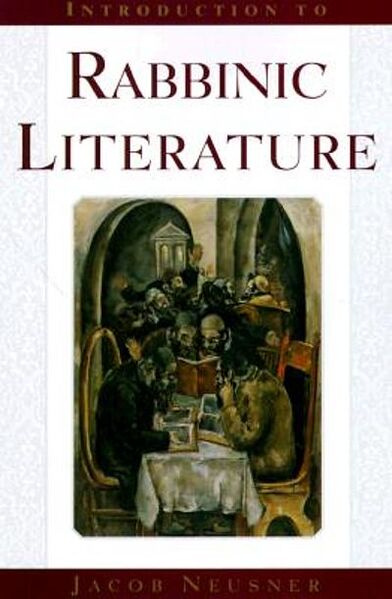File:1994 Neusner 2.jpg

Original file (400 × 611 pixels, file size: 35 KB, MIME type: image/jpeg)
Introduction to Rabbinic Literature (1994) is a book by Jacob Neusner.
Abstract
"With the publication of this volume, the Anchor Bible Reference Library achieves a landmark in the history of rabbinic literature and religion. In Introduction to Rabbinic Literature, legendary author Jacob Neusner collects the essence of a lifetime of scholarship. In short, this book explores the formative age of rabbinic literature, and tells in a simple, straightforward way what these documents are, where to find them, how to read them, and why their contents matter - and it does this all within the confines of one volume." "With the hands of a master scholar, Neusner weaves together the rich tapestry of documents that make up the literature of the rabbis, and shows why they are often called "The Other Half of the Torah"--The oral Torah, for they contain the commentary of the great rabbis on ancient scripture. It's all discussed here - the Mishnah, the Tosefta, the Talmuds of the Land of Israel and of Babylonia, the Midrash compilations, and much more. In addition, Neusner pays special attention to the literature of the rabbis as it pertains to the Old Testament and Christianity." "In reading this text, it is clear how and why the writings of the great rabbis have taken their place at the summit of humanity's intellectual achievement and heritage. And in the writing of this text, Jacob Neusner has created the definitive and indispensable guide for all those interested in the intriguing world of the rabbis during the centuries immediately following the emergence of Christianity."--Publisher description.
Editions
Published in New York, NY: Doubleday, 1994.
Table of contents
Rabbinic Literature As A Whole
Defining rabbinic literature and its principal parts Distinguishing documents by distinctive characteristics : rhetoric and topic -- Documentary coherence and differentiation : the four logics of coherent discourse in rabbinic literature -- The Dialectical argument in rabbinic literature -- The Mishnah And Its Exegesis : The Mishnah -- The Tosefta -- The Talmud of the land of Israel -- The Talmud of Babylonia -- The Reception Of Scripture : The Three Types Of Midrash-Exegesis In Rabbinic Literature : Midrash : writing with scripture
Exegetical Discourse and The Pentateuch
Mekhilta attributed to R. Ishmael (Exodus) -- Sifra (Leviticus) -- Sifrie to Numbers -- Sifrie to Deuteronomy -- Philisophicall Discourse : From Exegesis To Proposition : Genesis Rabbah -- Leviticus Rabbah -- Pesiqta deRab Kahana -- Pesiqta Rabbati -- Theological Discourse : Saying One Thing Through Many Things : Song of songs Rabbah -- Ruth Rabbah -- Lamentations Rabbati -- Esther Rabbah part one
Writing Without Authors: The Sage In Rabbinic Literature
Rabbinic literature and individual sages : writing without authors -- Tracate Abot (the fathers) -- Abot deRabbi Nathan (the fathers according to Rabbi Nathan) -- The Targumim : The Targumim in the context of rabbinic literature / Paul McCracken Flesher -- Rabbinic literature and the formation of Judaism
Appendix : Two open questions in the study of rabbinic literature.
External links
- [ Google Books]
File history
Click on a date/time to view the file as it appeared at that time.
| Date/Time | Thumbnail | Dimensions | User | Comment | |
|---|---|---|---|---|---|
| current | 12:45, 17 August 2023 |  | 400 × 611 (35 KB) | Gabriele Boccaccini (talk | contribs) |
You cannot overwrite this file.
File usage
There are no pages that use this file.